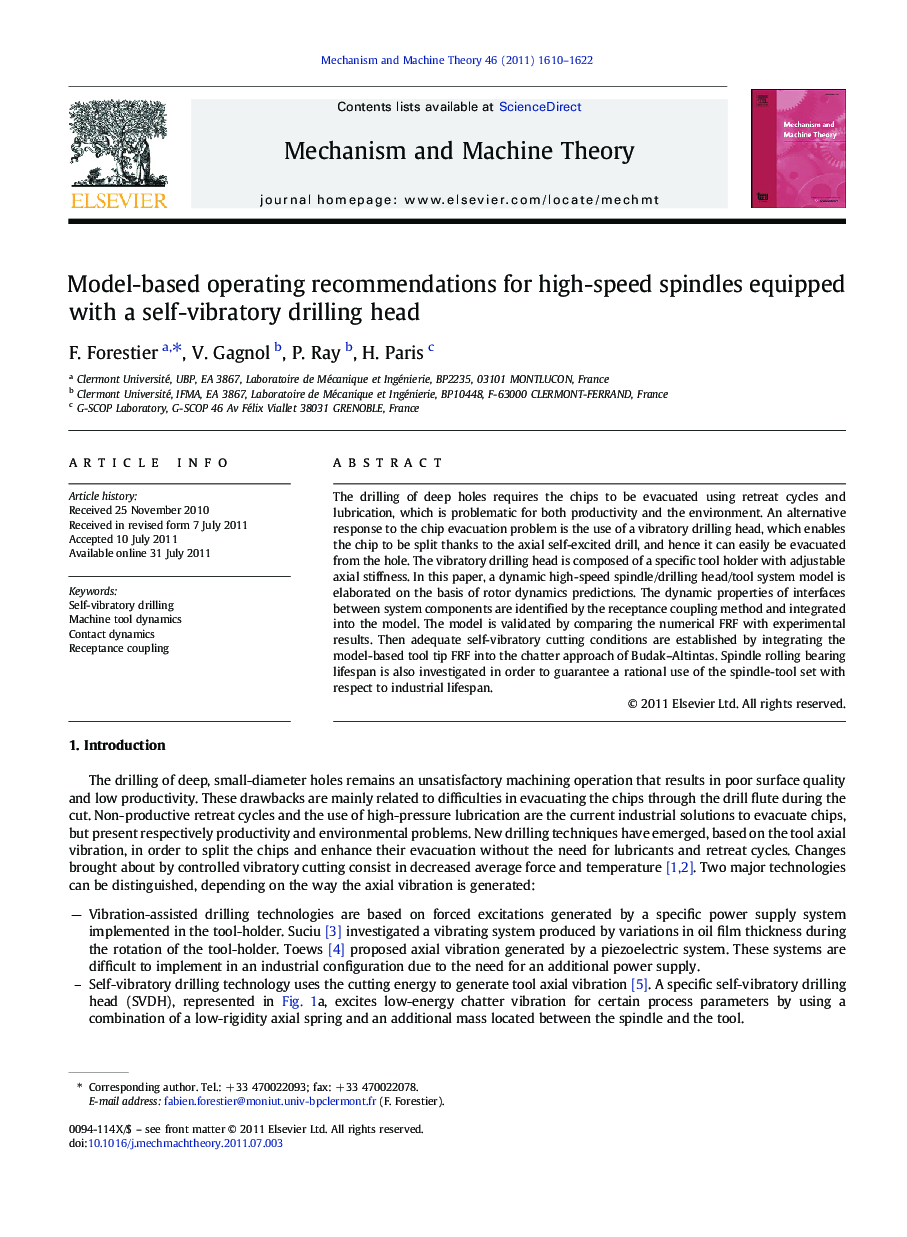| Article ID | Journal | Published Year | Pages | File Type |
|---|---|---|---|---|
| 802087 | Mechanism and Machine Theory | 2011 | 13 Pages |
The drilling of deep holes requires the chips to be evacuated using retreat cycles and lubrication, which is problematic for both productivity and the environment. An alternative response to the chip evacuation problem is the use of a vibratory drilling head, which enables the chip to be split thanks to the axial self-excited drill, and hence it can easily be evacuated from the hole. The vibratory drilling head is composed of a specific tool holder with adjustable axial stiffness. In this paper, a dynamic high-speed spindle/drilling head/tool system model is elaborated on the basis of rotor dynamics predictions. The dynamic properties of interfaces between system components are identified by the receptance coupling method and integrated into the model. The model is validated by comparing the numerical FRF with experimental results. Then adequate self-vibratory cutting conditions are established by integrating the model-based tool tip FRF into the chatter approach of Budak–Altintas. Spindle rolling bearing lifespan is also investigated in order to guarantee a rational use of the spindle-tool set with respect to industrial lifespan.
► We present the development of a (spindle–self vibratory drilling head) dynamic model. ► It takes into account rotor dynamics effects, bearings and interfaces behaviour. ► Validation is conducted by comparing the numerical FRF with experimental results. ► Optimal settings of the system are predicted by specifics stability lobe diagrams. ► Spindle speed recommendations are given to guarantee bearings lifespan.
